In the ‘Future Communities’ series, RICE explores how architecture and social design shape how Singaporeans live, learn, work and play. We take a look at 3 projects that have received the nation’s highest design accolade: the President*s Design Award.
After checking out how a 21st-century kampung looks like in Admiralty and an unconventional preschool in Punggol, we take a look at what’s brewing in this Marine Terrace community kitchen.
All photos by Nicky Loh for RICE Media unless otherwise stated.
It’s nine in the morning. A fragrant aroma wafts through the neighbourhood of Marine Terrace. Not from the nearby market, no. The scent leads me to the void deck of Block 52, where several people putter about GoodLife! Makan, a community kitchen run by volunteers for stay-alone seniors.
It takes me a moment to realise none of them are young volunteers. They’re senior folks — all of them.
They’re carrying plates of food, distributing them among one another. Further back within the red-walled kitchen, others are stirring vats of savoury sayur lodeh.
There are a few younger faces around if you look hard enough, but the community kitchen sees mainly retirees, all of whom gather to cook a meal together every other morning. The seniors decide on the menu together and buy ingredients together, only splitting up to prep, cook and clean before coming together to feast.
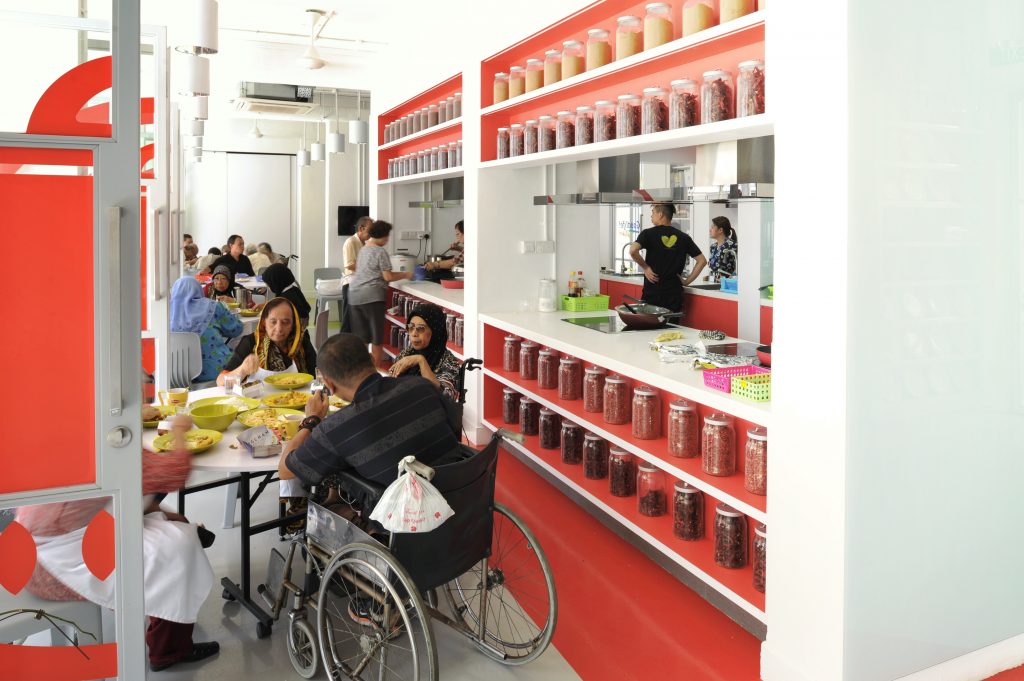
No Senior An Island
The scene brings to mind a traditional kampung with its communal vibes and wholesomeness. Not that I’m old enough to have known what kampung life was like at all, but these folks have — and they fit right into the setting like pieces of a jigsaw puzzle.
I comment on the quiet buzz of activity and Samuel laughs: “Oh no, they’re not always like this. The elders used to squabble a lot at the start.”
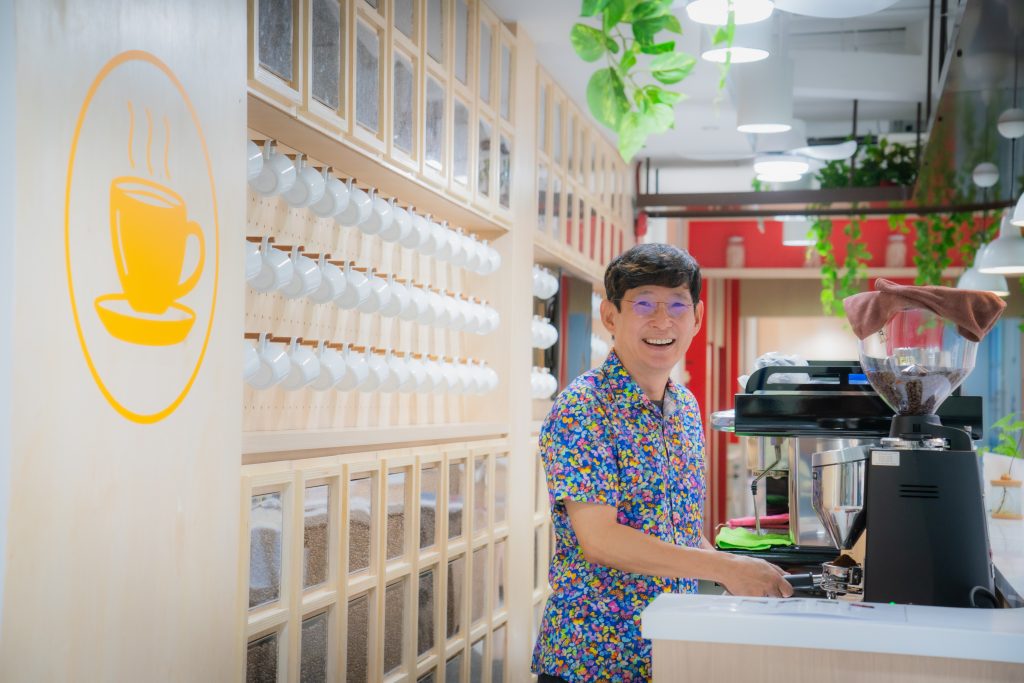
As the founder and CEO of Montfort Care, Samuel Ng has pretty much seen everything and anything when it comes to the seniors of Marine Terrace. After all, Montfort Care started as the Marine Parade Family Service Centre in 2000 before expanding into a network of social services across Singapore.
Samuel recalls in the early years following the kitchen’s inauguration in 2016 how hotpot tables have been flipped and punches have been thrown at one another when the seniors first gathered here. But they have grown much closer together since. Most importantly, they’ve found family, companionship, purpose.
The things they bicker about nowadays? It’s over whose turn it is to make coffee for everyone else.
GoodLife! Makan is as wholesome as it gets, but its raison d’être is rather sombre. Over his years as a social worker, Samuel realised that social isolation was an increasingly urgent issue. An increasing number of live-alone seniors have been found deceased in their apartments, having passed on without anyone being aware until the neighbours started smelling the unmistakable stench of decay. Even before their passing, the isolated seniors would rely on volunteers to bring their meals and other health services to their doorstep.
Seah Chee Huang of DP Architects, the other half of the brain of the project, spent his childhood in the sleepy neighbourhood of Marine Terrace. Growing up, he recognised that his grandparents were privileged enough to have a big, close-knit family who filled their final days with colour. Other elderly folks who did not have the company of family or friends risked slipping through the cracks.
No Magic, Only Details
Solitude isn’t just a state of being, but also a way of life. How, then, do you convince a bunch of elders who’ve long grown used to living on their own to come out of their shells, both emotionally and physically?
It starts with the bottommost level of Maslow’s Hierarchy of Needs — food. Instead of bringing the food to their doors, encouraging them to take active ownership of a communal kitchen meets their physiological need for nourishment without enabling a reclusive behaviour. Thereafter comes love and belonging by fostering a sense of connection, the third level in the hierarchy.
The key to that is in GoodLife! Makan’s design. More specifically, the sense of openness that has curious senior passers-by poking their heads in enquiring if they too could join in the activities. The space GoodLife!Makan sits in was formerly an HDB void deck, and Chee Huang found it essential to make sure the premise retained the same feel of one — by blurring the boundary between the premise and the concrete corridors outside.
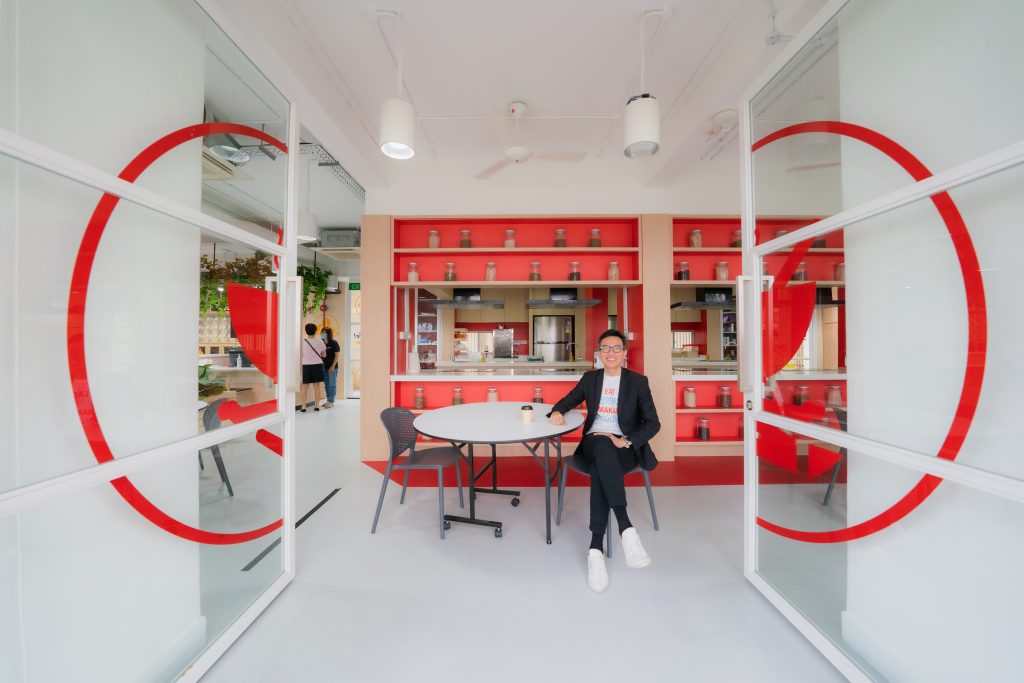
“Eldercare spaces are usually designed to be quite private, but that also makes them feel very closed off from the rest of the world,” he shares. Considering the whole point of the kitchen was to get the seniors out of their isolated little bubbles, Chee Huang needed to make sure GoodLife! Makan did not inadvertently become a different box to put them in.
The solution turned out to be surprisingly straightforward. In lieu of walls (glass, concrete or otherwise) are doors. Many, many, doors. They’re usually kept open while the seniors are cooking or when the weather’s favourable enough for the seniors to sit back and relax in the afternoon breeze.
These doors are also part of the basic elder-care design principles — when designing for those with limited mobility, more space and multiple entry/exit points mean the seniors have an easier time getting around the premise.
The other piece to the puzzle was to let the seniors have a say in what they wanted — by involving them in the design of the space. The same way grandma doesn’t like us meddling around in her kitchen, these seniors have their own ideas about where each and every thing should go. They knew where they wanted to store the larger pots and pans, where the sink should go, and what height the kitchen counter should be. Taking into consideration their feedback, being users of the centre, as part of a participatory design process, Chee Huang incorporated such features into the overall design scheme.
To better aid communication between the seniors who speak different languages and dialects, most of the directional signs use universally-understood symbols, such as a cooking pot or a coffee cup instead. Similarly, the premise is divided into different colours to clearly demarcate the different zones — red for the kitchen, blue for activities, and yellow for the coffee bar — doing away with the need for more walls and dividers.
For an extra dash of life, potted plants pepper the premises, while creeper plants hang down from the ceiling. Chee Huang initially envisioned turning the corridor space right outside the doors into a community garden for the seniors to plant crops in, but later decided to settle on one aspect of the space at a time. For now, the result is a bright, wide, open space you can see from end to end. Impressive, without feeling exclusive.
Beyond creating a space that they find useful, welcoming and intuitive, the seniors also feel a sense of responsibility and ownership — not just towards the premise, but also for themselves. Instead of living their later years as recipients of charity, taking a walk down to the community kitchen, soaking in the sun and preparing a hot meal for their friends (and themselves) becomes their form of self-care.
Teach A Senior To Fish
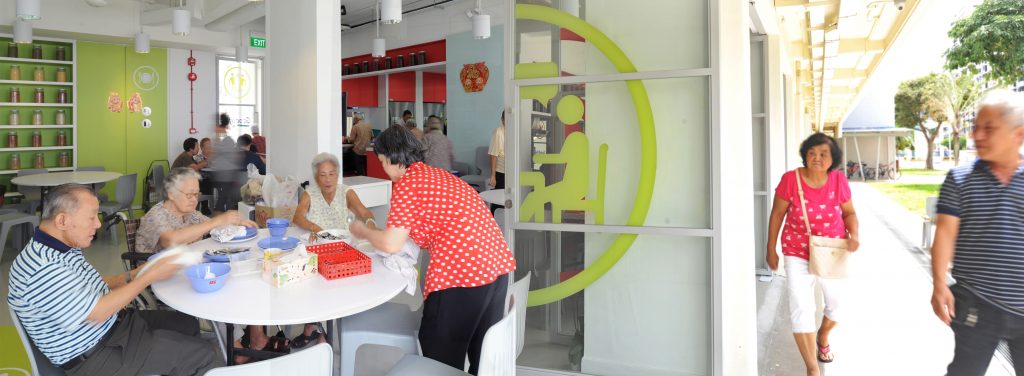
By framing the elderly as beneficiaries of charity, we’ve unwittingly instilled a sense of learnt helplessness among the older generation, Samuel observes. It’s a bold opinion. I ask him to elaborate.
From his experience, he knows that older folks dislike it when people ask them if they need help. The main reason why some seniors even agreed to join GoodLife! Makan was because Samuel asked if they could help him instead.
These are people with pride and self-worth, still capable of doing many things and filled with untapped potential. Why does it get locked away once they’re eligible for a PAssion Silver Concession Card?
Samuel recalls how in the process of expanding the activities offered at GoodLife!Makan, one particular widower discovered that he had a natural inclination towards art. He remarked to Samuel: “I’ve lived for 80 years. Only today did I learn I could draw.”
Just like that, the senior who had thought there’d only be boring, dreary days after the passing of his wife found something worth being excited for again.
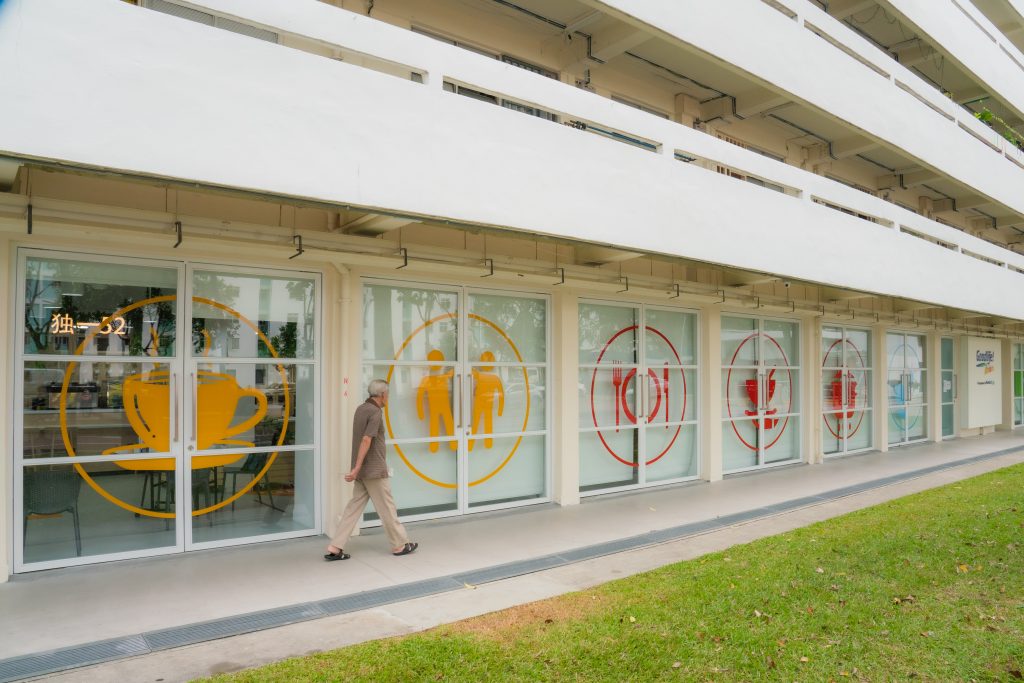
The term ‘sunset years’ is supposed to make one feel sad, but Samuel offers another way of thinking. Dusk is just the beginning of the night, and it’s only at night where the stars you normally don’t get to see, shine the brightest.
Taking inspiration from what he observed in Japan, he watched how the seniors there always found a way around every obstacle they faced. They’d struggle a fair bit, but they’d push through on their own.
In the same vein, Montfort Care aims to go beyond just providing food for the stomach. Instead, they hope that by giving them the metaphorical steering wheel, the seniors would be empowered and re-discover their own self-worth.
A Good Life, Literally
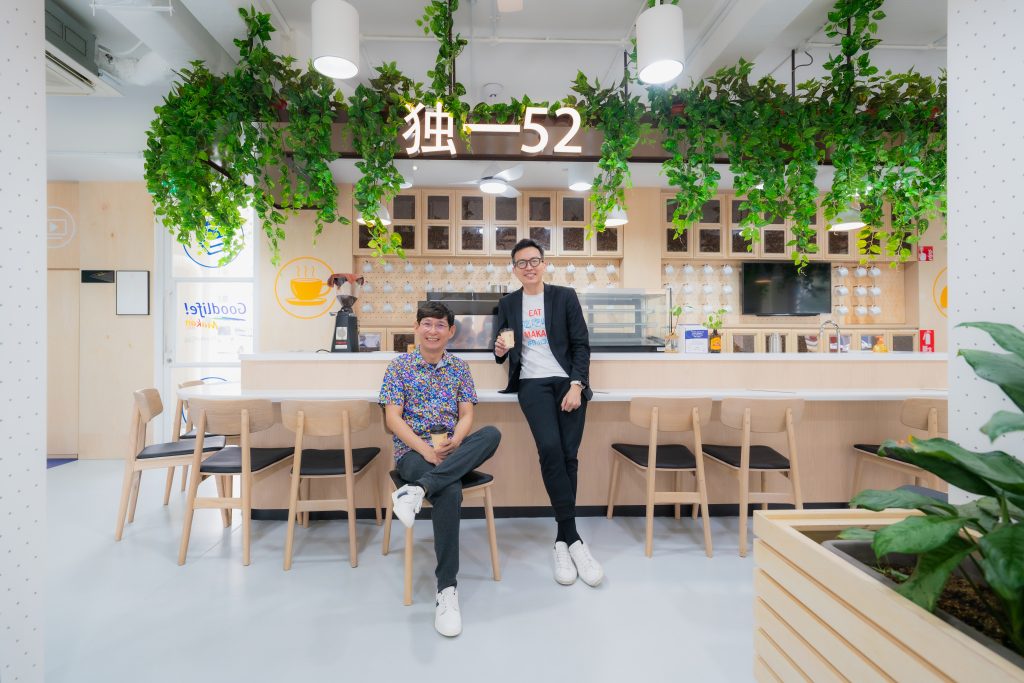
If there’s anything I’ve taken away from my time at GoodLife!Makan, it’s Chee Huang’s belief that purposeful design is the ability to harness design to effect positive changes. I’ve seen it for myself; how these seniors eagerly make their way over to the centre to cook or to do some arts and crafts, with more excitement than school kids meeting up after a long holiday. Their daily routine now, by far and large, involves doing things together as a tight-knit group of friends. You’d never suspect they were once recluses.
Undoing decades of a narrative and returning autonomy to the elderly is a tough goal to achieve. But as GoodLife!Makan has proven, it’s not an impossible one. From the looks of it, Chee Huang and Samuel don’t plan to stop just there, but hope to bring the concept of GoodLife!Makan to other neighbourhoods around Singapore and redesign the public’s perception of a senior activity centre.
Mention the communal kitchen to the elderlies of Marine Terrace and they’d all chorus “hou mia!” (Hokkien for ‘good life’) with smiles on their faces. A good life, a fulfilling life, that’s basically everything we’d want our grandparents to have, isn’t it?









